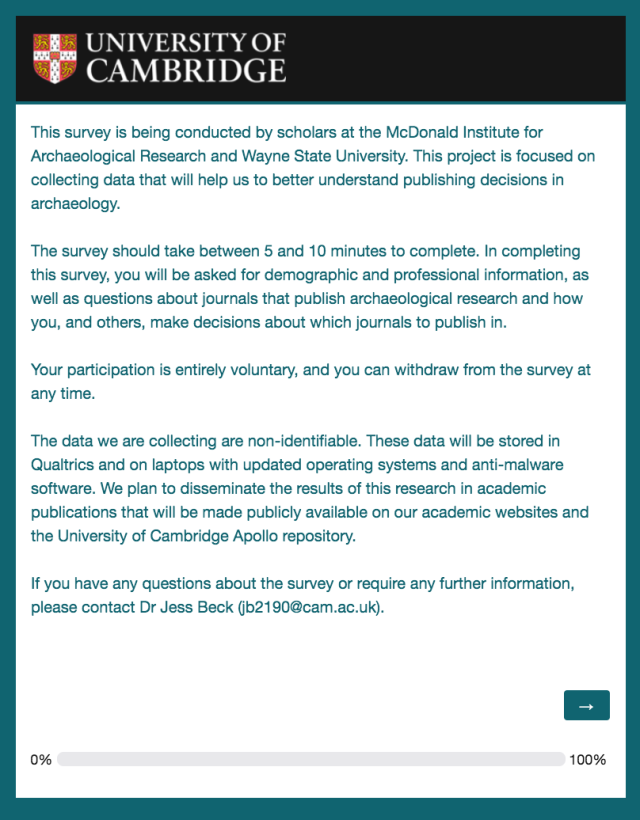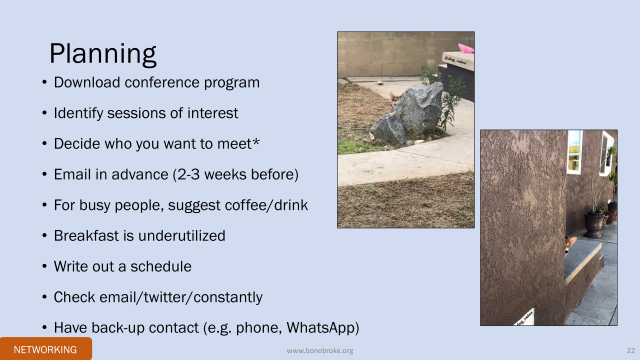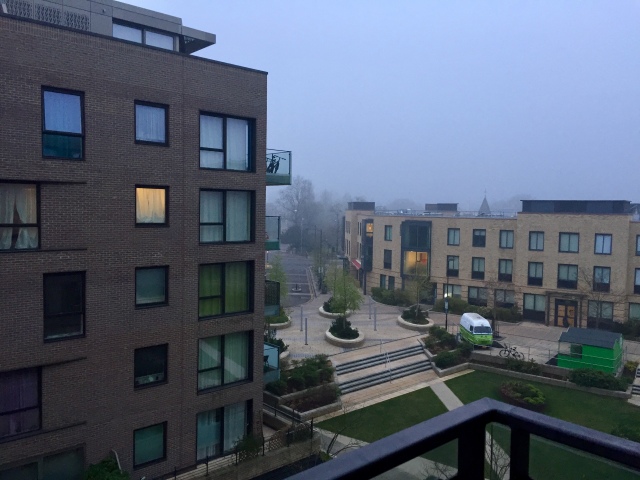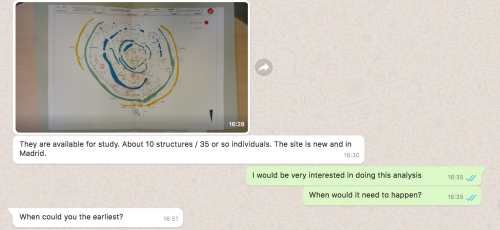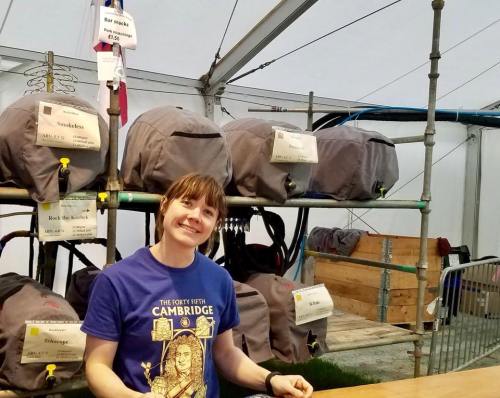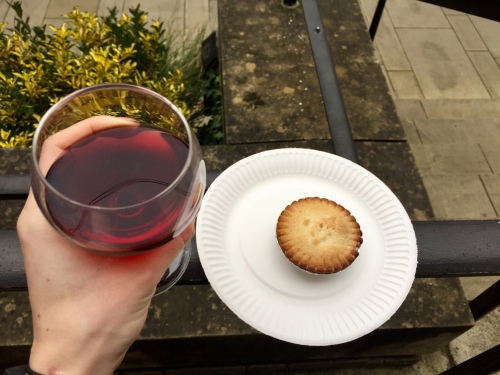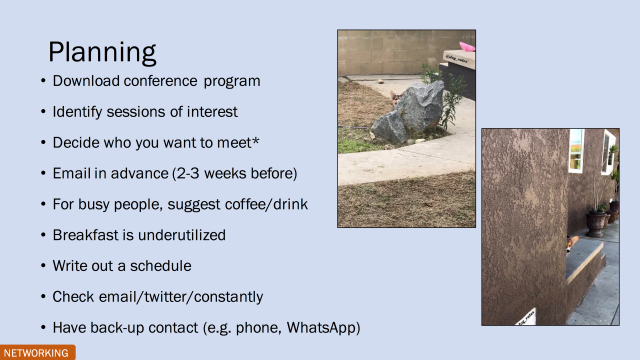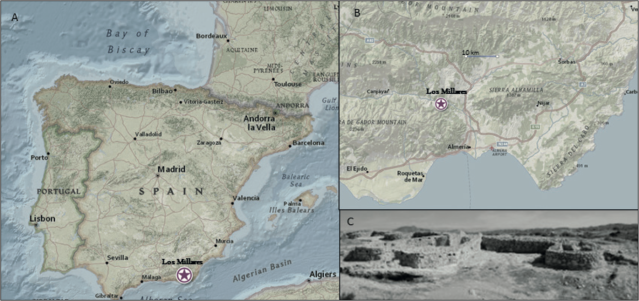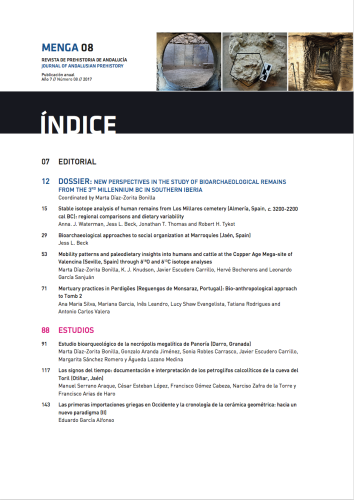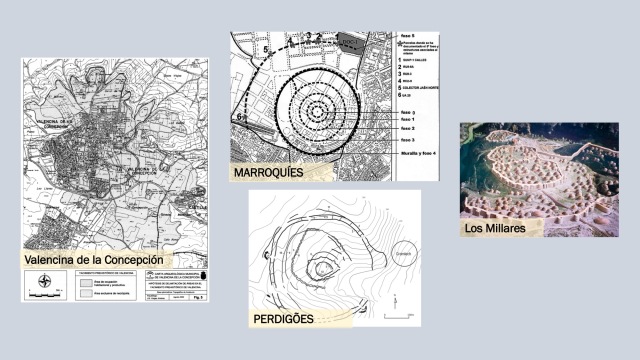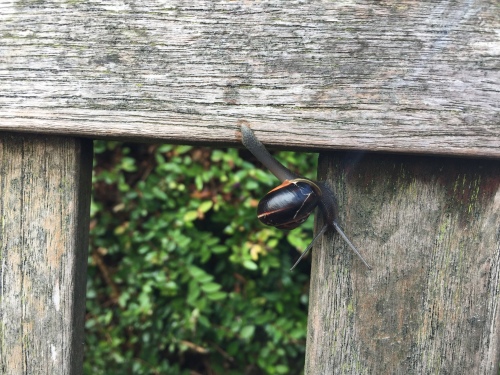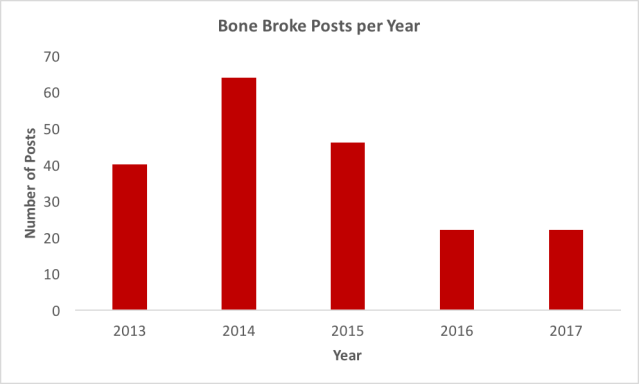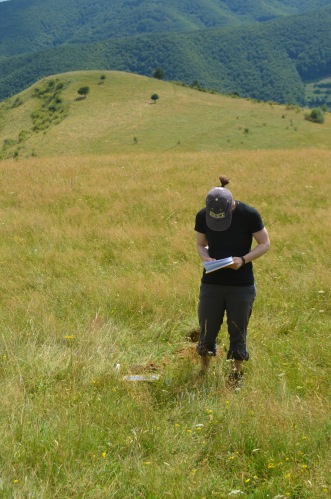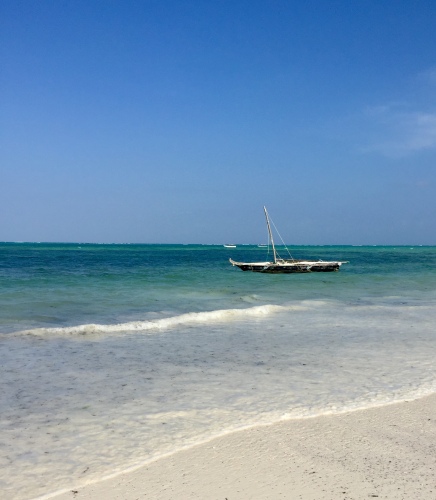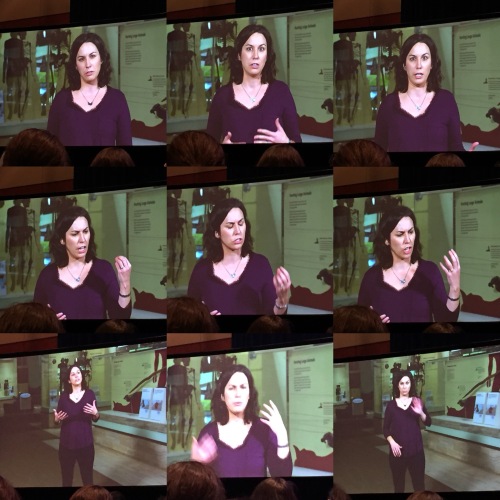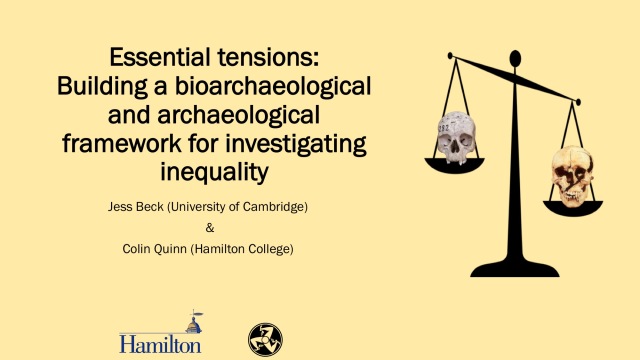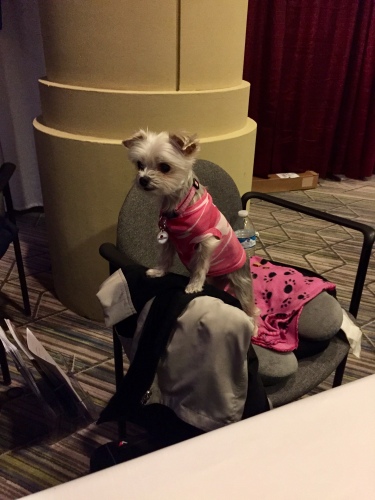I have been absent from the blog for several months because I’ve been working with my friend and collaborator Colin Quinn to prepare our first season of excavation in Alba County, Romania as part of the ongoing Mortuary Archaeology of the Râmeț Bronze Age Landscape project. This has entailed a number of exciting steps. Coordinating shuttle trips from Budapest to Cluj-Napoca! Ordering 500 Whirl-Pak geological sample bags! Filling out 15 pages of risk assessment forms for my home institution! Making a trip to the Dedeman hardware store in Alba Iulia every two days! What can I say – my life as a professional archaeologist is infinitely glamorous.
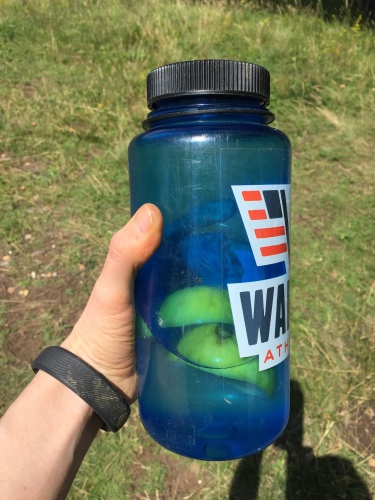
This is the fanciest thing I have ever done in the field.
We are here with three Hamilton College undergraduates, and have been trying to show them that there is more to Transylvania than 2x2m archaeological units. Last Saturday two local colleagues, Liviu Balăn and Raluca Burlacu, offered to take us on a trip to the neighboring Ampoi Valley, about a fifteen minute drive from Alba Iulia. We set out on a hike on the morning of June 16 to visit multiple archaeological sites strung out along the course of a mountain ridge line, including the “Castru Romana Ighiu” (Roman Fort at Ighiu), and an Early Bronze Age necropolis at Ampoița.

Parking down in town, the first major landmark visible on our trip was the Calcarele de la Ampoița, a massive limestone formation. These formations are often markers of Late Prehistoric sites in the region. This is a view from the tail end of the hike.
After parking and receiving the customary diplomatic attentions of the local dogs, we wound our way up through a muddy trek that ran in between fields and into the forest. We meandered upslope for about half an hour, before making it above the tree line, where a massive grassy slope opened before us, complete with the Transylvanian starter package™ of shepherd and flock, who greeted Liviu with a wave and a “Buna Ziua” as we drew closer:

A local shepherd, his flock, and his crew of extremely suspicious canine companions.
Turning to the east/northeast, we could see the steep, rounded hilltop that housed the remains of the Roman fortress, along with the town of Șard spread out below.
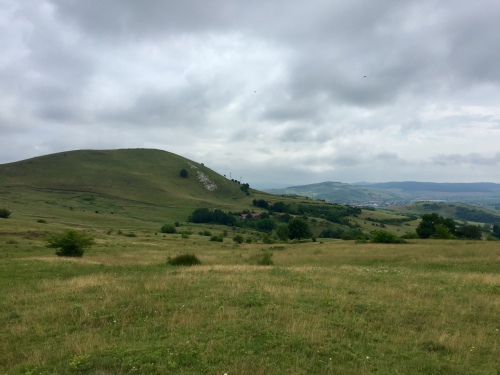
The large hill in the foreground on the left is the hill home to the Roman fort. The town of Șard visible to the right, and the distant hill in between the fort and the town is called Bilag.
As we toiled upwards, the defensive advantages of the hilltop became increasingly obvious.
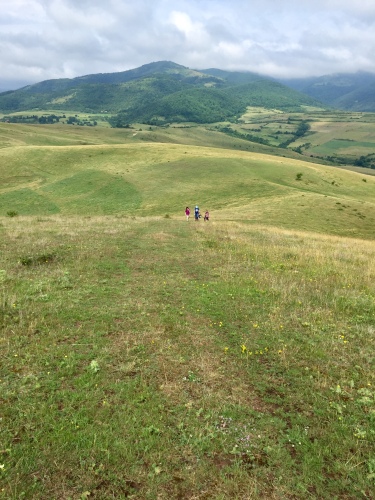
The students, laboring up the hill.
After taking a few minutes to recover, I learned a variety of important things. First, these salty pretzels with brânză (sheep’s milk cheese), provide a delicious means of controlling your salt balance and staving off dehydration.
 Second, after much badgering of both Liviu and Colin (“which one is Piatra Craivii again?”) the unparalleled view from the hilltop provided an excellent locale for mastering local toponyms and topography.
Second, after much badgering of both Liviu and Colin (“which one is Piatra Craivii again?”) the unparalleled view from the hilltop provided an excellent locale for mastering local toponyms and topography.
 As we lounged about vacuuming down cookies (as a direct result of archaeological fieldwork we are all now accustomed to a mid-morning sugar hit) and covrigei cu brânză, Liviu gave us some historical context for the site we were standing on. The fortress is located across the Ighiu Valley from Piatra Craivii, a triangular peak which housed a Dacian fortress. The Romans, wanting to keep an eye on their pesky mountain neighbours, who had proved somewhat resistant to incorporation into the imperial sphere, set up shop directly across the valley. Liviu explained the fraught relationship between the Dacians and Romans, covering periods of war, periods of peace, and the rise of Trajan, the Roman emperor who finally conquered the area, largely drawn here by the region’s copious supplies of gold. In Rome, Trajan’s Column recounts the history of the Dacian conquest, and Liviu noted there is also a replica in the Romanian capital, which I hope to see at some point (side note, Alexandra Ion, I have big plans involving a visit to see you in Bucharest next summer…).
As we lounged about vacuuming down cookies (as a direct result of archaeological fieldwork we are all now accustomed to a mid-morning sugar hit) and covrigei cu brânză, Liviu gave us some historical context for the site we were standing on. The fortress is located across the Ighiu Valley from Piatra Craivii, a triangular peak which housed a Dacian fortress. The Romans, wanting to keep an eye on their pesky mountain neighbours, who had proved somewhat resistant to incorporation into the imperial sphere, set up shop directly across the valley. Liviu explained the fraught relationship between the Dacians and Romans, covering periods of war, periods of peace, and the rise of Trajan, the Roman emperor who finally conquered the area, largely drawn here by the region’s copious supplies of gold. In Rome, Trajan’s Column recounts the history of the Dacian conquest, and Liviu noted there is also a replica in the Romanian capital, which I hope to see at some point (side note, Alexandra Ion, I have big plans involving a visit to see you in Bucharest next summer…).
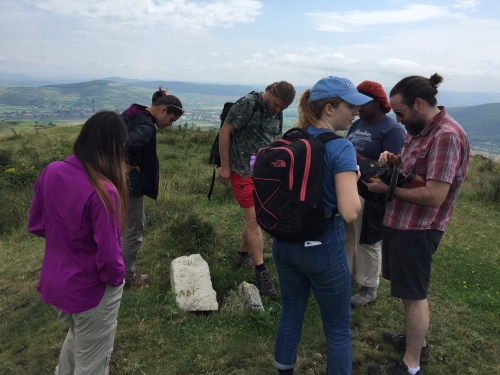
In which we learn about the Romans, the Dacians, and covrigei cu brânză.
Liviu also expressed his desire to work to make the Roman fortress a heritage site, ideally clearing the vegetation, putting up explanatory signs and placards, and filling in the large circular looter’s pit that dominates the pinnacle of the slope. I think it’s a wonderful idea; as an archaeologist and a tourist I would be drawn to the site because of both its history and the magnificent views it provides of the local landscape.
I forced everyone to sit around waiting for the clouds to clear in order to get a shot of the facade of Piatra Craivii, which is the stocky triangular peak projecting upwards in the middle of this photo:

After we’d had our fill of the Roman period, we headed back down the slope and further back in time. One of the reasons I’d been particularly excited about this field trip was that this same area is also home to a series of Early Bronze Age tombs that MARBAL collaborator Horia Ciugudean excavated back in the 1990s. Colin had mapped these out several years ago as part of his dissertation survey, and so we were able to locate them with minimal casting about the landscape.

Early Bronze Age tomb (previously excavated), identifiable by the limestone capstones covering the surface of the tumulus. Romanian archaeologist for scale.
Most of the tombs had been excavated several decades ago, but we could identify their remnants based on the abundance of limestone capstones, a typical feature of mortuary structures for this period in time.

The team standing along the edge of another excavated EBA tomb, further SW along the slope.
After we visited the tombs and Professor Quinn gave a brief lecture to the students expounding on their construction/location/regional context/archaeological importance, we headed back down into the woods, aiming for the Calcarele de la Ampoița. As with every Transylvanian I’ve met thus far, both Liviu and Raluca are avid mushroom hunters, so on our way back down we did some impromptu foraging.

Raluca examines a potential find.
Locally there are two kinds of large yellow mushrooms that look alike, but one is edible and the other is decidedly not. Raluca taught me that you can differentiate between the two because the underside of the inedible mushroom cap will changed colors when you press it with your finger, kind of like that fancy color-changing paper I remember being fascinated by as a grade school student.

DON’T EAT ME!
After hiking back into town, we finished off our day by visiting the institution of Mama Luţă, a local pension that is deservedly famous for its food. After expending so many calories on the hike, I felt it important to sample EVERYTHING Mama Luţă had to offer.
This included țuică, a traditional Romanian plum brandy. At Mama Luţă, I learned that there are two kinds of țuică: the ‘sweet’ kind (shown on the right, sweetened with cherries or berries), and the ‘tough’ kind, shown on the left, which is basically high octane moonshine.

“Sweet” and “tough” țuică
The pensione is also famous for its plăcinte, a pastry that can be sweet or savory. Those shown below are filled with brânză sărată şi mărar (salty sheep’s cheese with dill), varză (cabbage), and cartofi (deliciously salted potatoes). All of these were served with sos cu usturoi (garlic sauce)

Plăcintă (savoury)
In order to sample a little bit of everything, I ordered the “Platou Mama Luța”, which came with “telemea, caş, cârnați de casă,şnițel de pui, jumeri, slăninuță, pastramă de porc, ou fiert, ceapă, ardei roşii, castravete“, or in order “ewe’s milk cheese, house sausage, chicken schnitzel, pork cracklings, fatback, pork jerky/sausage, hard-boiled egg, onion, red peppers, and pickles), as well as a side of hearty village bread.

Platou Mama Luța
We finally finished the meal with sweet plăcinte, served with brânză dulce (sweetened sheep’s cheese) and mere (apples), the latter being my favourite of the dessert offerings. These were all served with sos smâtână dulce (sweetened cream).

Plăcintă (sweet)
All in all it was a phenomenal day. Many thanks to Liviu and Raluca for their tour of local Roman period, prehistoric, and culinary institutions!
 After spending about a month back in the US I have finally returned to Cambridge. I’m hoping to spend the next two months (a) writing; (b) experiencing the extended daylight and gentle sunshine of an early English summer, and (c) finishing up data collection for a ‘met-archaeological’ project I am working on. This is where you come in—that is, if you are a self-identifying archaeologist pursuing or having earned a master’s degree or higher.
After spending about a month back in the US I have finally returned to Cambridge. I’m hoping to spend the next two months (a) writing; (b) experiencing the extended daylight and gentle sunshine of an early English summer, and (c) finishing up data collection for a ‘met-archaeological’ project I am working on. This is where you come in—that is, if you are a self-identifying archaeologist pursuing or having earned a master’s degree or higher.